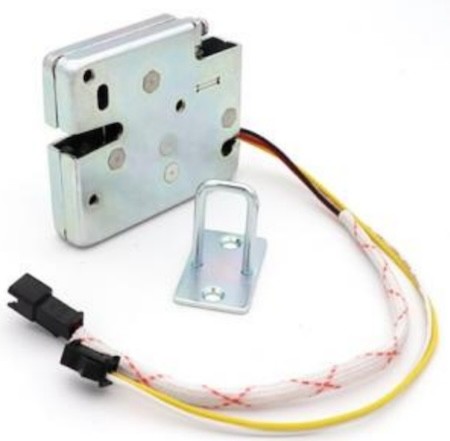Express lockers are the modern solution to convenience. In today's fast-paced world, convenience is a highly sought-after commodity. People are constantly on the go, juggling multiple responsibilities and tight schedules. This has led to the rise of innovative solutions that aim to simplify our lives. One such solution is Express Lockers. Express Lockers are self-service storage units that provide a secure and convenient way for individuals to receive or send packages. These lockers are strategically placed in easily accessible locations such as shopping centers, office buildings, and transportation hubs. They offer a range of sizes to accommodate various package dimensions. The process is simple yet efficient. When ordering online, customers can select the option of delivering their package to an Express Locker instead of their home address. Once the package arrives at the locker, customers receive a unique code via email or text message. They can then visit the locker at their convenience and enter this code on the touchscreen interface to retrieve their package.
The benefits of Express Lockers are numerous. Firstly, they eliminate the need for individuals to wait at home for deliveries or worry about missed packages due to absence. With Express Lockers, people have complete control over when and where they collect their packages. Additionally, these lockers offer enhanced security compared to traditional doorstep deliveries. Packages left unattended outside homes can be vulnerable to theft or damage from weather conditions. In contrast, Express Lockers provide a safe and protected environment for packages until they are collected by their rightful owners. Moreover, Express Lockers contribute towards reducing carbon emissions by optimizing delivery routes and minimizing failed delivery attempts due to recipients not being available at home.
In conclusion, Express Lockers have revolutionized how we send and receive packages in our modern society. Their convenience factor cannot be overstated as they cater perfectly to our busy lifestyles while ensuring security and efficiency in package handling processes. As technology continues advancing rapidly, we will likely witness further improvements and widespread adoption of Express Lockers in the future.
In today’s daily life, express lockers can be seen everywhere and have become an integral part of daily shopping, warehousing and self-service. In this context, the emergence of smart express locker locks has changed people's lifestyles and brought a different experience to operators and users.
What is a smart express locker? How does it protect everyone’s delivery? To understand this, we have to start with the principles of smart express locker locks. In the daily use of smart express lockers, the electromagnetic lock plays a role in intelligence and protection. Electromagnetic locks usually need to be used in conjunction with a control panel and software platform to issue commands through the software to unlock the lock. When current passes through the silicon steel sheet, the electromagnetic lock will generate a great suction force to well absorb the iron plate to achieve the effect of locking the door.

Make’s electromagnetic lock MK760-001 is a lock specially designed for smart express lockers. It is made from high-quality steel. It is easy to install, has stable performance and a service life of more than 50,000 times. The electromagnetic lock can support multiple technologies such as Bluetooth, NB-IoT, LoRa, Zig-Bee, NFC, Wi-Fi, etc. It can connect to the data platform and form a lock record of opening and closing, allowing users to use smart express lockers with confidence and ease.
Make's electromagnetic lock will combine the security needs of smart express lockers and strive to solve the security problems encountered when receiving and delivering, providing a smarter and more convenient lifestyle. Please contact us for more details.
The benefits of Express Lockers are numerous. Firstly, they eliminate the need for individuals to wait at home for deliveries or worry about missed packages due to absence. With Express Lockers, people have complete control over when and where they collect their packages. Additionally, these lockers offer enhanced security compared to traditional doorstep deliveries. Packages left unattended outside homes can be vulnerable to theft or damage from weather conditions. In contrast, Express Lockers provide a safe and protected environment for packages until they are collected by their rightful owners. Moreover, Express Lockers contribute towards reducing carbon emissions by optimizing delivery routes and minimizing failed delivery attempts due to recipients not being available at home.
In conclusion, Express Lockers have revolutionized how we send and receive packages in our modern society. Their convenience factor cannot be overstated as they cater perfectly to our busy lifestyles while ensuring security and efficiency in package handling processes. As technology continues advancing rapidly, we will likely witness further improvements and widespread adoption of Express Lockers in the future.
In today’s daily life, express lockers can be seen everywhere and have become an integral part of daily shopping, warehousing and self-service. In this context, the emergence of smart express locker locks has changed people's lifestyles and brought a different experience to operators and users.
What is a smart express locker? How does it protect everyone’s delivery? To understand this, we have to start with the principles of smart express locker locks. In the daily use of smart express lockers, the electromagnetic lock plays a role in intelligence and protection. Electromagnetic locks usually need to be used in conjunction with a control panel and software platform to issue commands through the software to unlock the lock. When current passes through the silicon steel sheet, the electromagnetic lock will generate a great suction force to well absorb the iron plate to achieve the effect of locking the door.

Make’s electromagnetic lock MK760-001 is a lock specially designed for smart express lockers. It is made from high-quality steel. It is easy to install, has stable performance and a service life of more than 50,000 times. The electromagnetic lock can support multiple technologies such as Bluetooth, NB-IoT, LoRa, Zig-Bee, NFC, Wi-Fi, etc. It can connect to the data platform and form a lock record of opening and closing, allowing users to use smart express lockers with confidence and ease.
Make's electromagnetic lock will combine the security needs of smart express lockers and strive to solve the security problems encountered when receiving and delivering, providing a smarter and more convenient lifestyle. Please contact us for more details.
